Ancient worlds could be kept 'alive' by gravitational nudges
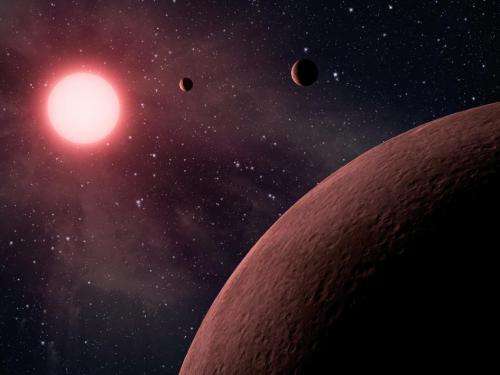
For more than three billion years now, Earth's ability to support life has been a delicate balancing act. Climatic periods of severe cold or hot have brought life to its knees. Glaciers covered the planet in the "snowball Earth" epoch, which ended some 650 million years ago. During the extremeheat of the early Triassic period around 250 million years ago, tropical sea temperatures exceeded 100 degrees Fahrenheit.
But the temperature pendulum has always swung back from these extremes, thanks in large part to the moderating phenomenon of plate tectonics. The sliding movements of Earth's crust regulate the amount of heat-trapping carbon in our atmosphere by trapping the carbon in the seafloor and releasing it later by way of volcanoes. In this way, the "carbon cycle" has helped stir our planet out of frozen slumbers and has curbed the greenhouse effect.
Yet all good things, as the saying goes, must come to an end. The driver of Earth's tectonics is heat from our planet's slowly cooling core and the decay of radioactive elements deep within the planet. In another few billion years, that heat will have largely dissipated and Earth's geophysical activity will cease. Although life might have already bitten the dust by then, likely thanks to a warming Sun, the end of the moderating carbon cycle will exacerbate conditions for any embattled organisms that might still exist.
A new study considers life's geophysical collapse on planets outside our solar system. Specifically, the paper looks at exoplanets orbiting red dwarf stars, which are smaller, cooler and less massive than our Sun. These dim red stars host the easiest planets for our telescopes to observe in the "habitable zone," the orbital band in which surface water neither permanently freezes away nor boils off. Conveniently, a large portion of red dwarfs (and their attendant solar systems) are also older than our Sun. Older stars are less stormy than younger ones, further easing the detection of planets around them.
It stands to reason that among the first habitable zone planets we will get to study will be those around ancient, low-mass stars. But these worlds—aged on the order of 10 billion years—could be geophysically, and therefore, biologically, dead.
"While the habitable zone ensures that the surface and atmosphere of a planet are the right temperature to support life, the planet's interior could have cooled to the point that geophysical activity has ceased," said Richard Greenberg, a planetary sciences professor at the University of Arizona in Tucson. "Astrobiologists believe geophysical activity may be essential for life."
This issue is addressed in a paper to be published in the July 1 issue of the Monthly Notices of the Royal Astronomical Society by Greenberg's student Christa Van Laerhoven, along with co-authors Richard Greenberg and Rory Barnes of the University of Washington.
Life support for dead planets
The new study considers how other exoplanets in a red dwarf solar system might keep the geophysical fires lit inside of a habitable planet, courtesy of the influence of gravitational tides.
Stars, planets and moons in solar systems all gravitationally influence each other. If a habitable planet were kept in an elliptical orbit around its star, owing to the gravitational tugging of another planet sharing its solar system, the star could warp the habitable planet's shape. That tidal warping would generate, by friction, enough internal warmth to maintain geophysical activity.
A powerful example of this tidal heating is right here in our solar system with Jupiter and its moon, Io. The orbital relationship of Jupiter and its four biggest moons, including Io, has kept Io in an elliptical orbit around the parent planet. Io gets gravitationally pulled and squeezed as it orbits periodically closer and farther away from Jupiter. All that flexing creates tremendous heat within Io's rocky structure, forcing the "pizza-faced" moon's myriad volcanoes to constantly erupt molten material.
Too much flexing and a habitable planet goes volcanically crazy, evaporating all its water. Not enough flexing, on the other hand, and the planet eventually slips into a geophysical coma. The latter would happen if an orbit were too circular. Unlike oval-shaped elliptical orbits, which subject their planets to varying gravitational forces and thus tidal heating, circular orbits translate to a constant gravitational influence, and therefore no tidal heating.
A consequence of tidal heating, however, is that it eventually circularizes the elliptical orbit of another body, whether planet or moon. This normalizing effect follows from the gravitationally flexed body being nudged into an orbital path that reduces the flexing. For habitable planets around low-mass stars, a circularization of the planet's orbit would happen almost immediately, within a few thousand years of the star and planet forming.
So, for planets to stay habitable around low-mass stars on account of geophysical activity, they need to somehow stay out of circular orbits. The researchers set out to find what kinds of planets, in what outer orbits, could prod the inner, habitable planet into suitable orbital eccentricities, or ellipticalness, for extended periods. (The outer planet, it should be noted, by virtue of being farther away from the star, does not experience as strong a normalizing effect on its orbital shape, so it can stay eccentric without issue.)
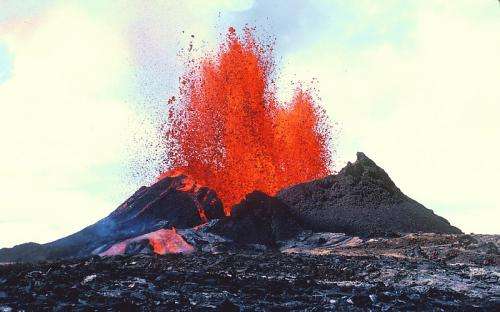
Gauging the sort of planetary arrangements that promote habitability will guide astronomers in their hunt for livable exoplanets.
"If another planet's gravitational effect keeps the habitable-zone planet on a slightly eccentric orbit, that would promote internal tidal heating," said Greenberg. "Thus, before concluding that such a habitable zone planet is indeed habitable, another planet should be sought out observationally that could promote the requisite internal heat."
Earth's stand-in
Greenberg and colleagues started with a hypothetical Earthly twin planet,with the same size, mass and susceptibility to tidal heating effects. They placed this planet in their models at a distance of 3.4 percent of the average Sun-Earth distance around a star with a tenth of the Sun's mass—in other words, smack dab in this dim, cool, red dwarf star's habitable zone. They also ran simulations of such a world around a real star, the dim crimson sun known as DEN1048.
The researchers then plugged in outer, companion planets of varying masses, distances and shaped orbits. The team looked for what combinations kept the habitable zone planet in a range of internal heating levels that were neither too nor hot nor cold.
Admittedly, the amount of heating needed to keep Earth's own tectonic engine purring along is not known with much certainty. As a crude basis, though, the researchers went with the current level of heat emanating from Earth's surface, which is 0.08 watts per square centimeter.
A reasonable lower limit was supplied by the example of geologically moribund Mars. It is reckoned that tectonic activity ceased on the Red Planet when the surface heat level there whittled to about half of Earth's present value.
A value considered too high: Io's 2 watts per square centimeter, though life would likely die out due to rampant volcanism well shy of that figure.
Out of the hot, but not into the cold
As the effects of the outer planet's parameters played out on that of the inner, habitable world in the models, the researchers considered two phases both of these planets' orbits go through. The first phase takes place shortly after the planets form, while they feel each other out gravitationally. The planets enter vacillating eccentric orbits, where one goes oval while the other circularizes, and then vice versa. The second phase is when the planets settle into stable, long-term eccentricities.
For a habitable planet to keep geophysically active, that first phase has to be short enough such that the planet does not volcanically load its atmosphere with carbon dioxide and end up lethally hot and desiccated.
The second phase, meanwhile, needs to last long enough to keep the planet active for us to get around to observing it. Again, that figure is a ballpark 10 billion years after the planet originally formed around its elderly, low-mass star.
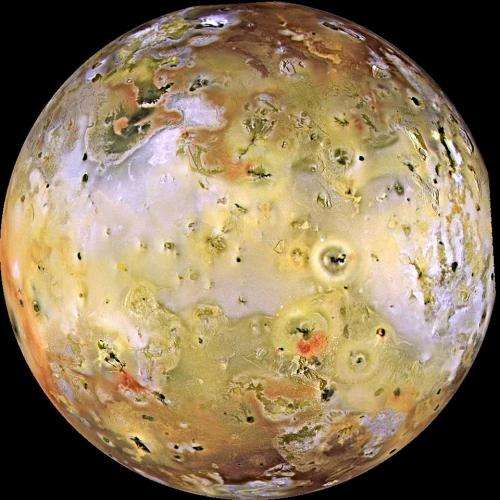
A promising find
Fortunately, for life's sake, the researchers found that in many outer planet situations, this fast-first-phase, slow-second-phase combination pans out. For instance, a Neptune-sized outer planet a few times farther out from its sun than the inner, rocky planet, and with a relatively minor eccentricity could keep the habitable planet geophysically active.
The outer planet in this scenario needn't even be biggish like our outer planets of Neptune or Jupiter. An Earth-sized outer planet would suffice in keeping up a desirable eccentricity for the inner planet over time. The researchers modeled an Earth-sized outer planet in a range of eccentricities and distances, from quite close to the habitable, inner world to exceeding half the Earth's average distance to the Sun, and found that this relatively small world would do the trick.
The findings are, of course, a first approximation. It's highly unlikely that another potentially habitable exoplanet would have exactly Earth's mass, size, water content, et cetera, so each discovered example would be its own scenario.
The presence of multiple planets (which seems common based on studies of exo-solar systems so far) would also further complicate matters. The Earth-like planet's tidal heating could vary over time owing to the convoluted gravitational interactions of its planetary neighbors. Accordingly, surface habitability might change over time, too.
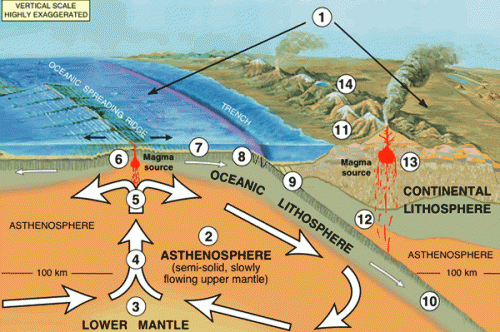
Humanity's ultimate refuge?
Those nuances aside, the sustained geophysical activity induced in the habitable planet by an outer companion could be very long indeed. In fact, habitable planets around low-mass stars could remain geophysically active for many tens of billions of years. That's intriguing, because red dwarf stars can live on for trillions of years, unlike our Sun, which will die out after 10 to 12 billion years.
"The presence of the outer planet ensures that the inner planet's eccentricity does not die away, except over timescales way longer than the 14-billion-year age of the universe—perhaps even trillions of years," said Greenberg. "Therefore, a planet orbiting in the habitable zone of a star like we modeled—with a tenth of the Sun's mass, with an outer companion that sustains modest tidal heating—could be the longest-lived surface habitat available in the universe."
When our planet and even solar system become no longer inhabitable, an interstellar human race might find itself a new, permanent home around a red dwarf star. For that matter, advanced aliens might have already had the same idea. Our various SETI (Search for Extraterrestrial Intelligence) efforts, such as listening for radio transmissions or searching for signs of life in exoplanetary atmospheres, might want to focus on habitable worlds with outer planets around ancient red dwarfs.
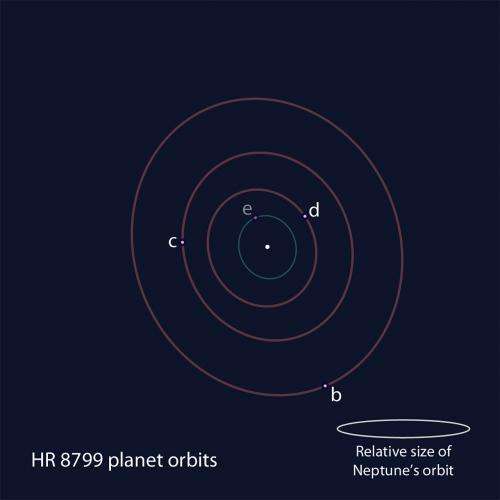
The paper authors took a moment to expound on the ramifications of this particular finding in their paper.
"The Earth will become uninhabitable within the next few billion years, and so this type of planet may be the ultimate home for humanity in the very (very) distant future," the authors wrote. "Similarly, if these planets are the ideal locations for long-term survival, they may already be inhabited by space-faring civilizations and hence may be favorable targets for SETI."
More information: C. Van Laerhoven, R. Barnes, and R. Greenberg. "Tides, planetary companions, and habitability: habitability in the habitable zone of low-mass stars." MNRAS (July 1, 2014) Vol. 441 1888-1898 DOI: 10.1093/mnras/stu685
Journal information: Monthly Notices of the Royal Astronomical Society
Source: Astrobio.net
This story is republished courtesy of NASA's Astrobiology Magazine. Explore the Earth and beyond at www.astrobio.net .





















